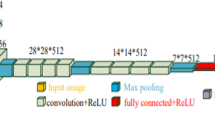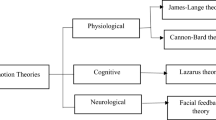Abstract
Visual impairment refers to any kind of vision loss ranging from complete blindness to the partial loss of vision. Studies have shown that social understanding can be severely affected due to visual impairment. This paper tries to address this gap by presenting a socially assistive application for the visually impaired. The study develops the application using deep learning and app development technologies. A transfer learning Facial Expression Recognition (FER) model is embedded in a mobile application to recognize facial expressions. Guided by haptic feedback, the application developed in this study helps users perceive expressions of the person(s) they are interacting with. The practical value of this work lies in assisting and enhancing the social understanding of visually impaired individuals. On the other hand, the research value of the current study lies in the development of a novel application which is faster, lighter, implementable on low-end devices, and achieves better accuracy, on par with state-of-the-art models.






Similar content being viewed by others
References
McAlpine LM, Moore CL (1995) The development of social understanding in children with visual impairments. J Visual Impair Blind 89:349–358
Sheaffer BL, Golden JA, Averett P (2009) Facial expression recognition deficits and faulty learning: implications for theoretical models and clinical applications. Int J Behav Consult Therapy 5(1):31
MA M (2020) MMA facial expression. In: Kaggle. https://www.kaggle.com/mahmoudima/mma-facial-expression. Accessed 15 Nov 2021
Sambare M (2020) FER-2013. In: Kaggle. https://www.kaggle.com/msambare/fer2013. Accessed 15 Nov 2021
Li S, Deng W (2020) Deep facial expression recognition: a survey. IEEE Trans Affect Comput 13(3):1195–1215
Mollahosseini A, Chan D, Mahoor MH (2016) Going deeper in facial expression recognition using deep neural networks. In: 2016 IEEE winter conference on applications of computer vision (WACV). https://doi.org/10.1109/WACV.2016.7477450
Meng Z, Liu P, Cai J, Han S, Tong Y (2017) Identity-aware convolutional neural network for facial expression recognition. In: 2017 12th IEEE international conference on automatic face and gesture recognition (FG 2017). https://doi.org/10.1109/FG.2017.140
Wang K, Peng X, Yang J, Meng D, Qiao Y (2020) Region attention networks for pose and occlusion robust facial expression recognition. IEEE Trans Image Process 29:4057–4069
Savchenko AV (2021) Facial expression and attributes recognition based on multi-task learning of lightweight neural networks. In: 2021 IEEE 19th international symposium on intelligent systems and informatics (SISY). https://doi.org/10.1109/SISY52375.2021.9582508
Knyazev B, Shvetsov R, Efremova N, Kuharenko A (2017) Convolutional neural networks pretrained on large face recognition datasets for emotion classification from video. In: arXiv.org. https://arxiv.org/abs/1711.04598. Accessed 15 Nov 2021
Liu C, Tang T, Lv K, Wang M (2018) Multi-feature based emotion recognition for video clips. In: Proceedings of the 20th ACM international conference on multimodal interaction. https://doi.org/10.1145/3242969.3264989
Deng J, Dong W, Socher R, Li LJ, Kai L, Fei-Fei L (2009). ImageNet: A large-scale hierarchical image database. In: 2009 IEEE conference on computer vision and pattern recognit. https://doi.org/10.1109/cvpr.2009.5206848
Sandler M, Howard A, Zhu M, Zhmoginov A, Chen L-C (2018) MobileNetV2: Inverted residuals and linear bottlenecks. In: 2018 IEEE/CVF conference on computer vision and pattern recognition. https://doi.org/10.1109/CVPR.2018.00474
Saurav S, Saini R, Singh S (2021) EmNet: a deep integrated convolutional neural network for facial emotion recognition in the wild. Appl Intell 51:5543–5570. https://doi.org/10.1007/s10489-020-02125-0
Knyazev B, Shvetsov R, Efremova N and Kuharenko A (2018) Leveraging large face recognition data for emotion classification. In: 13th IEEE international conference on automatic face & gesture recognition (FG 2018), pp 692–696. https://doi.org/10.1109/FG.2018.00109
Dandıl E, Özdemir R (2019) Real-time facial emotion classification using deep learning. Data Sci Appl 2(1):13–17
Kusuma GP, Jonathan AP, Lim AP (2020) Emotion recognition on fer-2013 face images using fine-tuned vgg-16. Adv Sci Technol Eng Syst J 5(6):315–322
Theckedath D, Sedamkar RR (2020) Detecting affect states using VGG16, ResNet50 and SE-ResNet50 networks. SN COMPUT SCI 1:79. https://doi.org/10.1007/s42979-020-0114-9
Dubey AK, Jain V (2020) Automatic facial recognition using VGG16 based transfer learning model. J Inf Optim Sci 41(7):1589–1596
Mehendale N (2020) Facial emotion recognition using convolutional neural networks (FERC). SN Appl Sci 2(3):1–8. https://doi.org/10.1007/s42452-020-2234-1
Riaz MN, Shen Y, Sohail M, Guo M (2020) eXnet: An efficient approach for emotion recognition in the wild. Sensors 20(4):1087
Anand R, Shanthi T, Nithish MS, Lakshman S (2019) Face recognition and classification using googlenet architecture. Adv Intell Syst Comput 1084:261–269. https://doi.org/10.1007/978-981-15-0035-0_20
Author information
Authors and Affiliations
Corresponding author
Ethics declarations
Conflict of interest
The authors declare that there is no competing interest or conflict of interest in this paper.
Additional information
Publisher's Note
Springer Nature remains neutral with regard to jurisdictional claims in published maps and institutional affiliations.
Rights and permissions
Springer Nature or its licensor holds exclusive rights to this article under a publishing agreement with the author(s) or other rightsholder(s); author self-archiving of the accepted manuscript version of this article is solely governed by the terms of such publishing agreement and applicable law.
About this article
Cite this article
Pushpalatha, M.N., Meherishi, H., Vaishnav, A. et al. Facial emotion recognition and encoding application for the visually impaired. Neural Comput & Applic 35, 749–755 (2023). https://doi.org/10.1007/s00521-022-07807-z
Received:
Accepted:
Published:
Issue Date:
DOI: https://doi.org/10.1007/s00521-022-07807-z




